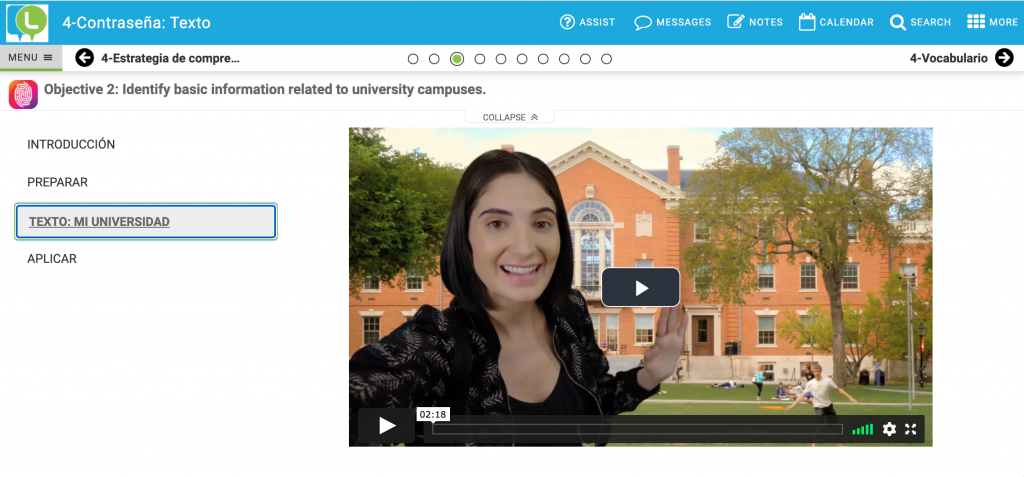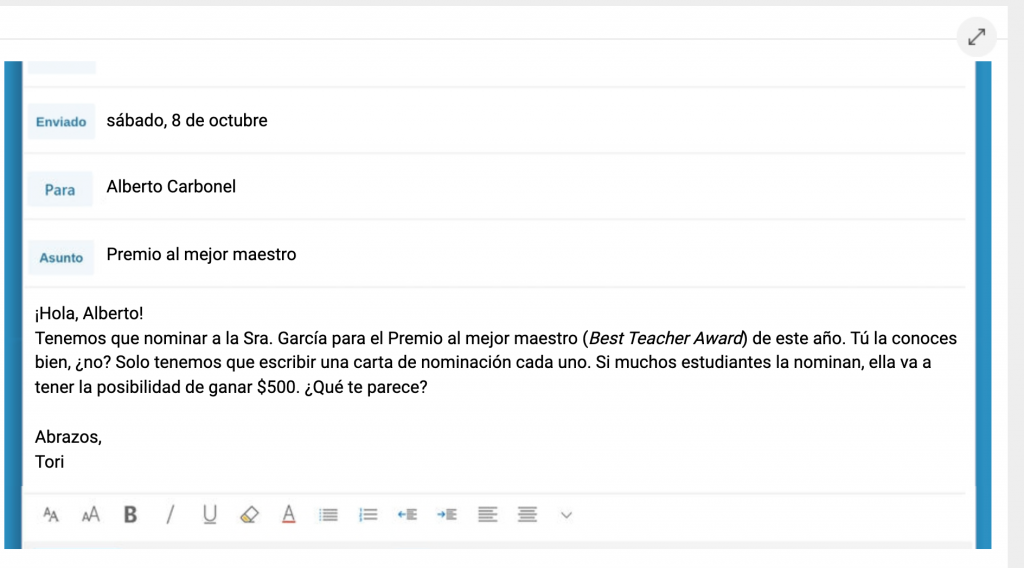Interpretive, Interpersonal, and Presentational Modes of Communication
Exploring Culture
In each unit we got the opportunity to explore Latin American and Spanish culture. In unit three we studied the traditional siesta. A siesta or nap time is common in the Spanish speaking world. It is a time after lunch that workers can take a nap before returning back to work. This is important to know when traveling to Spanish speaking countries because many businesses are closed during the afternoon so that the employees can eat lunch and nap.
Exploring Culture is important when learning the Spanish language so that we can get a better understanding of the life of people in Spanish speaking countries. I got to learn how to use the internet and do research in Spanish to help me better explore the culture of Spanish speaking people. Exploring culture helped me understand the different values and lifestyles in Hispanic cultures.
Engaging in Communities
Learning another language like Spanish is important when engaging in other communities. It gives you the opportunity to engage and connect with more people in your local and global communities. Being able to engage with more people is beneficial for spreading ideas and culture. It also helps us learn more about the people around us.
Presentational Writing
In Unit 3 I learned how to write about my schedule. In order to do this I had to learn my days of the week and times of day. I also learned how to describe how busy or relaxed my day is as well as how to make future plans. For my project I wrote a paragraph about my schedule describing when I had class, when I eat my meals, and what I do in my free time. Writing about my own schedule also helped me in learning how to read and understand my classmates schedules. Learning how to communicate what I am doing at certain times of the week can help me in the future when I am trying to make plans with a Spanish speaker.
Mi-calendario-1Interpretive Listening
In unit four I completed a listening activity which I watched and listened to a video where a Spanish speaker, Lucia, talks about the campus of the university she attends. Listening to Lucias video seemed difficult at first because I did not yet understand the vocabulary. But once I learned the vocabulary I was able to understand what she was describing in her video. I’ve learned that the best way to listen to Spanish speakers is to pick out the vocabulary that you do know and pay close attention to gestures.

Interpretive Reading
In unit number five we learned about inferring and gisting to help us better understand what I am reading. This helped me a lot because when I am reading in Spanish I do not know all of the vocabulary so it can be difficult to understand the reading. But if I use my inferring and gisting skills I can interpret the reading a lot easier. As a class we practiced reading an Email that was written in spanish and interpreted it. I did not know all of the Spanish words in the email but using context clues the class was able to understand the Email.
